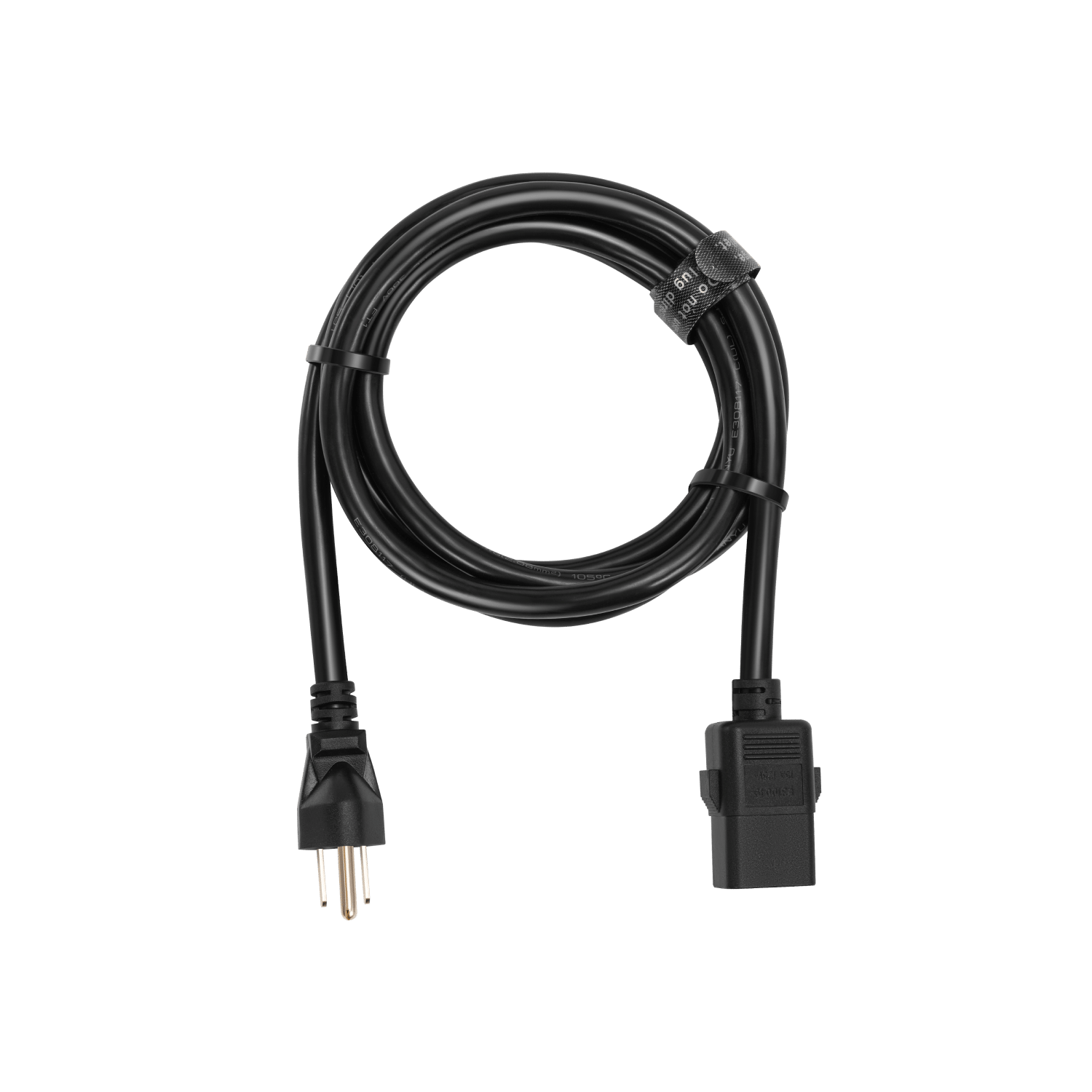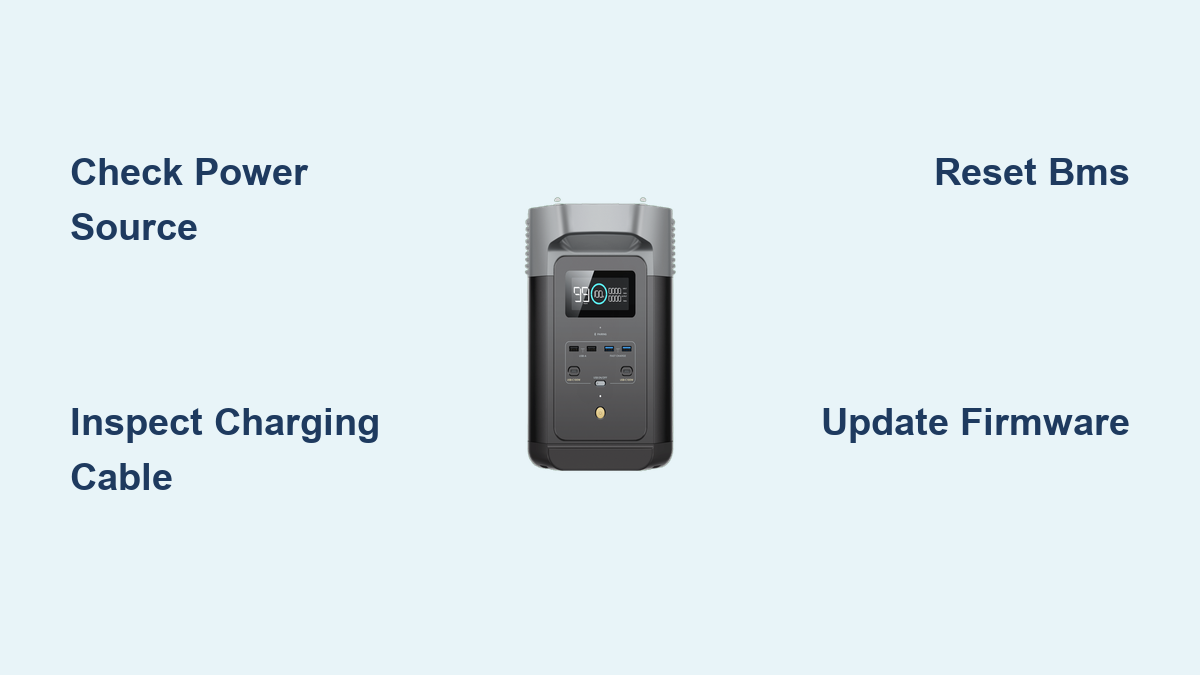Are you frustrated that your EcoFlow portable power station isn’t charging? It’s incredibly disheartening when you rely on a device for power, especially during outdoor adventures or emergencies, and it refuses to take a charge. The good news is, often a quick reset or simple check can get it back up and running.
This comprehensive guide will walk you through everything you need to know to diagnose and fix your EcoFlow not charging issue. We’ll cover common causes, multiple solutions ranging from basic troubleshooting to more advanced checks, and preventative measures to keep your EcoFlow powered up for years to come. By the end of this article, you’ll have the knowledge and confidence to resolve your charging problem and get back to enjoying the convenience of your EcoFlow.
Common Causes of Ecoflow Not Charging
Several factors can prevent your EcoFlow from charging. Here’s a breakdown of the most frequent culprits:
Power Source Issues
The most common cause is a problem with the power source itself. This includes:
* Faulty Wall Outlet: The outlet you’re using may not be providing power.
* Damaged Charging Cable: The cable can be frayed, bent, or internally damaged.
* Incompatible Charger: Using a charger not specifically designed for your EcoFlow model.
* Power Strip/Surge Protector Issues: The strip might be overloaded or malfunctioning.
Environmental Factors
External conditions can also affect charging:
* Extreme Temperatures: EcoFlows have optimal operating temperature ranges. Charging in very hot or cold environments can inhibit charging.
* Humidity & Moisture: Exposure to moisture can damage internal components.
EcoFlow Unit Issues
Sometimes, the problem lies within the EcoFlow itself:
* Software Glitches: Temporary software bugs can interfere with charging.
* Battery Management System (BMS) Errors: The BMS controls the charging process and can sometimes malfunction.
* Internal Component Failure: Less common, but possible, is a failure of the charging circuitry or battery cells.
How to Fix Ecoflow Not Charging: Multiple Solutions

Here are several methods to resolve your EcoFlow not charging issue, starting with the simplest and progressing to more involved solutions.
Method 1: Basic Troubleshooting (Quick Fix)
This covers the easy checks that often resolve the issue.
Diagnosing the Issue
- Visually Inspect: Check the charging cable and power adapter for any visible damage.
- Outlet Test: Plug another device into the outlet to confirm it’s working.
- Cable Swap: Try a different compatible charging cable.
Fix Steps
- Power Cycle: Turn off the EcoFlow completely, unplug it from the wall, wait 30 seconds, and plug it back in.
- Reset the BMS: Press and hold the power button for 30 seconds. This forces a reset of the Battery Management System. Note: This may temporarily display a low battery reading.
- Try a Different Outlet: Plug the EcoFlow into a known working outlet.
Testing
Plug in your EcoFlow and observe the charging indicator. If it starts charging, the problem was likely a simple power source or software glitch.
Method 2: Charger and Cable Verification

This method focuses on ensuring you’re using the correct and functioning charger and cable.
Diagnosing the Issue
- Verify Charger Compatibility: Confirm the charger’s voltage and amperage match the specifications for your specific EcoFlow model (found in the user manual).
- Inspect the Charger: Look for any signs of physical damage to the charger itself.
Fix Steps
- Use the Original Charger: Always use the charger that came with your EcoFlow.
- Purchase a Replacement Charger: If the original is damaged, buy a genuine EcoFlow replacement charger. Avoid third-party chargers.
- Test with a Known Good Cable: Borrow a compatible cable from a friend or purchase a new one.
Testing
Monitor the charging indicator after switching to the original or a verified compatible charger and cable.
Method 3: Temperature and Environmental Check
This method addresses potential issues related to temperature or humidity.
Diagnosing the Issue
- Check the Temperature: Use a thermometer to measure the ambient temperature around the EcoFlow.
- Inspect for Moisture: Look for any signs of condensation or water damage.
Fix Steps
- Move to a Moderate Temperature: Relocate the EcoFlow to a shaded area with a temperature between 41°F and 104°F (5°C and 40°C).
- Dry the Unit: If moisture is present, gently wipe down the EcoFlow with a dry cloth and allow it to air dry completely before attempting to charge.
- Improve Ventilation: Ensure adequate airflow around the EcoFlow to prevent overheating.
Testing
After adjusting the environment, attempt to recharge the EcoFlow.
Method 4: Firmware Update & Factory Reset (Advanced)
This method involves updating the EcoFlow’s firmware and, as a last resort, performing a factory reset. Caution: A factory reset will erase all saved settings.
Diagnosing the Issue
- Check for Firmware Updates: Use the EcoFlow app to check if a new firmware version is available.
- Assess Software Glitches: If the EcoFlow is behaving erratically, a firmware update may resolve the issue.
Fix Steps
- Update Firmware: Follow the instructions in the EcoFlow app to download and install the latest firmware.
- Factory Reset: If updating the firmware doesn’t work, perform a factory reset through the EcoFlow app’s settings. Refer to your EcoFlow model’s user manual for specific instructions.
Testing
After the firmware update or factory reset, attempt to charge the EcoFlow.
How to Prevent Future Charging Issues
- Store Properly: Store your EcoFlow in a cool, dry place when not in use.
- Use Genuine Accessories: Only use the charger and cables provided by EcoFlow.
- Regularly Check Cables: Inspect cables for wear and tear.
- Avoid Extreme Temperatures: Don’t leave your EcoFlow in direct sunlight or freezing conditions.
- Keep it Clean: Wipe down the EcoFlow regularly to remove dust and debris.
- Monitor Battery Health: Use the EcoFlow app to track the battery’s health and charging cycles.
Pro Tips
- Deep Discharge Occasionally: Completely discharging your EcoFlow (down to 0%) once every few months can help recalibrate the BMS.
- Avoid Prolonged Storage at 100%: Storing your EcoFlow at a full charge for extended periods can degrade the battery. Aim for around 50-60% charge for long-term storage.
- Use the App for Diagnostics: The EcoFlow app provides valuable insights into the unit’s status and can help identify potential problems.
- Don’t Overload the Unit: Avoid exceeding the EcoFlow’s maximum power output.
- Check the Ventilation Ports: Ensure the ventilation ports are not blocked.
Professional Help
- When to Seek Professional Assistance: If you’ve tried all the troubleshooting steps and your EcoFlow still won’t charge, it’s time to contact EcoFlow support or a qualified repair technician. Also, seek help if you notice any signs of physical damage, such as swelling or leaking.
- Finding a Service Provider: Visit the EcoFlow website for authorized service centers in your area.
- Typical Costs: Repair costs vary depending on the issue and the service provider, but expect to pay between $100-$300 for common repairs.
FAQ
Q: Why is my EcoFlow charging so slowly?
A: Several factors can cause slow charging, including using an incompatible charger, a low-quality cable, or charging in extreme temperatures. Ensure you’re using the original charger and that the EcoFlow is within its optimal temperature range.
Q: Can I charge my EcoFlow while it’s being used?
A: Yes, most EcoFlow models support pass-through charging, allowing you to charge the unit while powering devices. However, charging will be slower when in use.
Q: What does the blinking red light on my EcoFlow mean?
A: A blinking red light usually indicates an error. Check the EcoFlow app for specific error codes and troubleshooting steps.
Q: Is it normal for my EcoFlow to get warm during charging?
A: It’s normal for the EcoFlow to get slightly warm during charging. However, if it becomes excessively hot, stop charging immediately and contact EcoFlow support.
Get Your Ecoflow Working Again
You’ve now explored numerous solutions to get your EcoFlow charging again. From simple resets and cable checks to firmware updates and environmental adjustments, you’re well-equipped to tackle this common issue. Remember to prioritize safety and use genuine EcoFlow accessories for optimal performance.
Have you successfully fixed your EcoFlow charging issue? Share your experience or any other helpful tips in the comments below to help other EcoFlow users!

